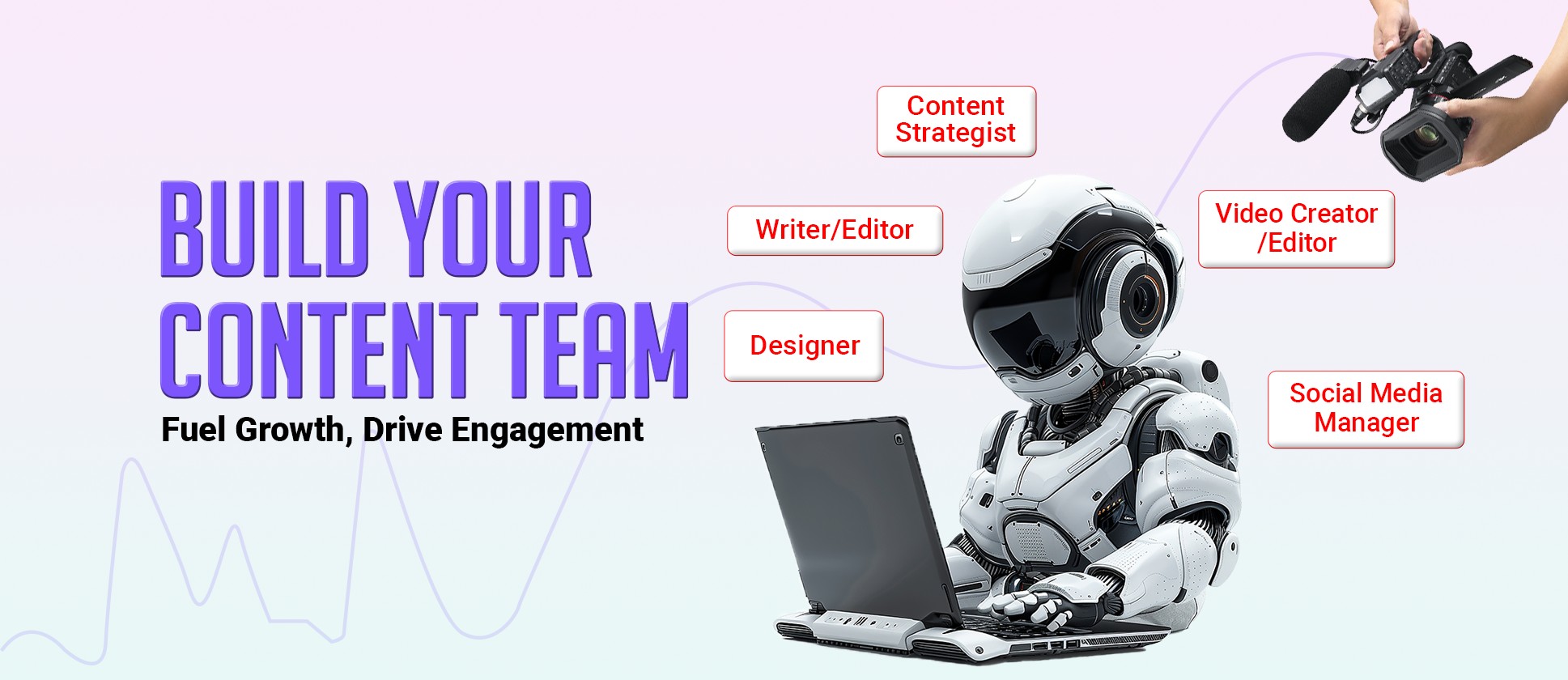Behind every great brand you admire online, there’s usually one thing working quietly in the background, which is a strong content creation team. Whether it’s the blog that answered your question perfectly, the video that stopped your scroll, or the post that sparked a conversation, none of it happened by accident. It came together because a group of people knew how to blend creativity, strategy, and consistency into one clear message.
Content can fill feeds, build trust, drive conversations, and support business growth. That’s where having the right team really matters. When each role is clear and every effort aligns with your brand vision, your content works.
In this guide, we’ll discuss what it takes to build a content creation team that actually delivers results. You can learn from understanding the core roles needed to set up a process that keeps everything running smoothly, and deciding whether to keep things in-house or outsource. If you’re serious about scaling your content and turning it into a true growth engine, you’re in the right place.
Why a Content Creation Team is Critical for Business Growth
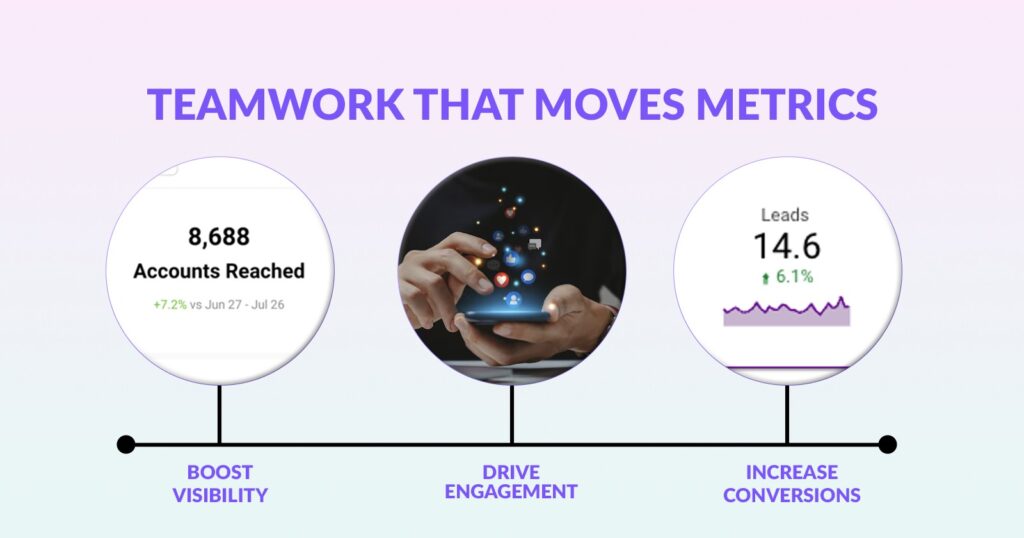
Many brands invest in dedicated content creation teams because it delivers tangible results. According to Demand Metric, content marketing generates around three times more leads than traditional marketing methods, while costing 62% less. That’s not a slight difference – it’s proof that well-planned content does more than just fill up a blog or a social feed. It fuels growth.
Look at how it impacts performance metrics. HubSpot found that businesses publishing regular content get 55% more website traffic than those that don’t. On the revenue side, WordStream highlights how video content, in particular, can double conversions when done right. Put simply, strong content backed by the right team has a direct line to sales, trust, and long-term customer loyalty.
Here’s what businesses often notice once a proper content creation team is in place:
- Increased website traffic
- Stronger brand visibility
- Better customer engagement
- Faster revenue growth with video
Defining the Foundation of a Content Creation Team
Before you think about who to hire or what tools to use, it’s important to set the foundation. A content creation team helps to produce blogs, videos, or social posts and makes sure everything connects back to your brand’s bigger picture. Without clarity on vision and goals, even high-quality content can feel scattered and fail to build trust with your audience.
Start with Your Brand Vision and Goals
Every strong content creation team begins with alignment. When your team knows exactly what your brand stands for, it becomes much easier to set the right voice, tone, and messaging across all channels. This clarity ensures your audience always recognizes you, whether they’re watching a video, reading a blog, or scrolling through a social post.
Aligned content looks consistent and helps build confidence. Unaligned content, on the other hand, can confuse your audience and weaken trust. If you’re curious about how technology can support this process, our guide on generative AI features for content creation shows how brands are using new tools to stay consistent while scaling output.
Here’s a simple comparison of aligned vs. unaligned content:
| Factor | Aligned Content | Unaligned Content |
|---|---|---|
| Audience Trust | Builds reliability and authority | Creates doubt or mixed signals |
| Engagement | Encourages comments, shares, and loyalty | Leads to drop-offs and less interaction |
| Conversions | Clear messaging drives sign-ups and sales | Confusing offers reduce action rates |
Key Roles in a Successful Content Creation Team
A successful content creation team involves various skills to produce cohesive and impactful content beyond just writing blogs or editing videos. Each team member plays a unique role, from developing strategy to polishing the final draft. This teamwork ensures that your brand message is not only published but also connects with your audience.
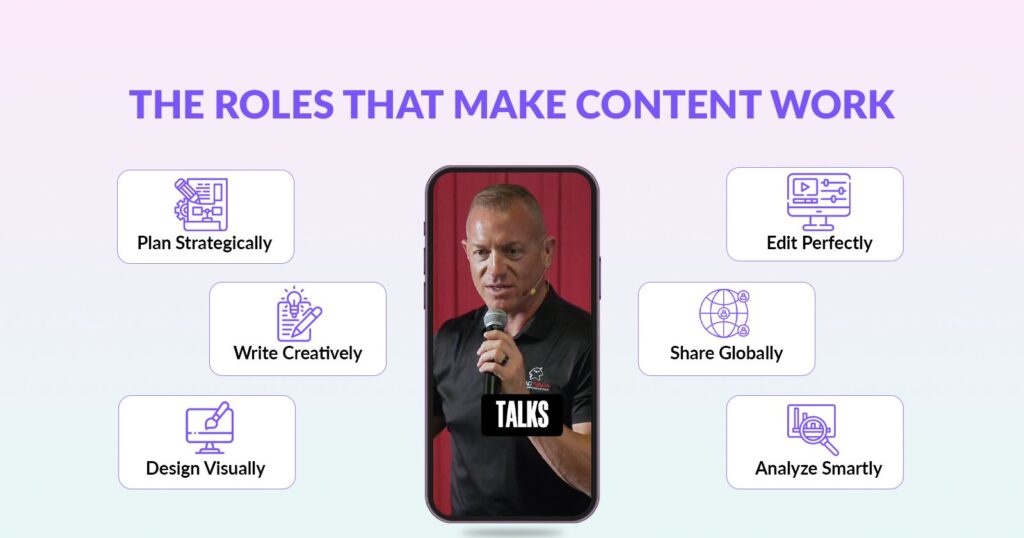
Core Roles Every Team Needs
Here’s a quick look at the must-have roles and why they matter.
| Role | Responsibilities | Why It Matters |
|---|---|---|
| Content Strategist | Defines overall content direction | Ensures brand alignment |
| Writer/Copywriter | Produces engaging written content | Boosts SEO + delivers clarity |
| Graphic Designer | Creates visuals, infographics | Improves shareability |
| Video Producer | Develops video formats | Drives engagement & conversions |
| Social Media Manager | Manages distribution across platforms | Expands content reach |
| SEO Specialist | Optimizes for search engines | Increases organic traffic |
| Content Editor | Refines and reviews final drafts | Maintains quality and consistency |
Optional but Impactful Roles
Depending on the size of your business and what you want to achieve, you might not need a full in-house team right off the bat. Even so, bringing in some extra help can really boost your content. A Content Coordinator organizes and schedules tasks for a smooth workflow. A Reporting Analyst evaluates data and key performance indicators (KPIs) to identify effective strategies. If you want to boost your online presence, a Developer can optimize your content for speed and usability.
Remember that quality content relies on creativity and trust. Google’s E-E-A-T guidelines (Experience, Expertise, Authoritativeness, and Trustworthiness) emphasize these factors as essential for every team’s work.
Step-by-Step Guide to Building a Content Creation Team
Building a strong content creation team isn’t about hiring people at random – it’s about creating a structure that supports your brand’s growth long term. The process works best when you take it step by step, aligning every role and effort with your business goals.
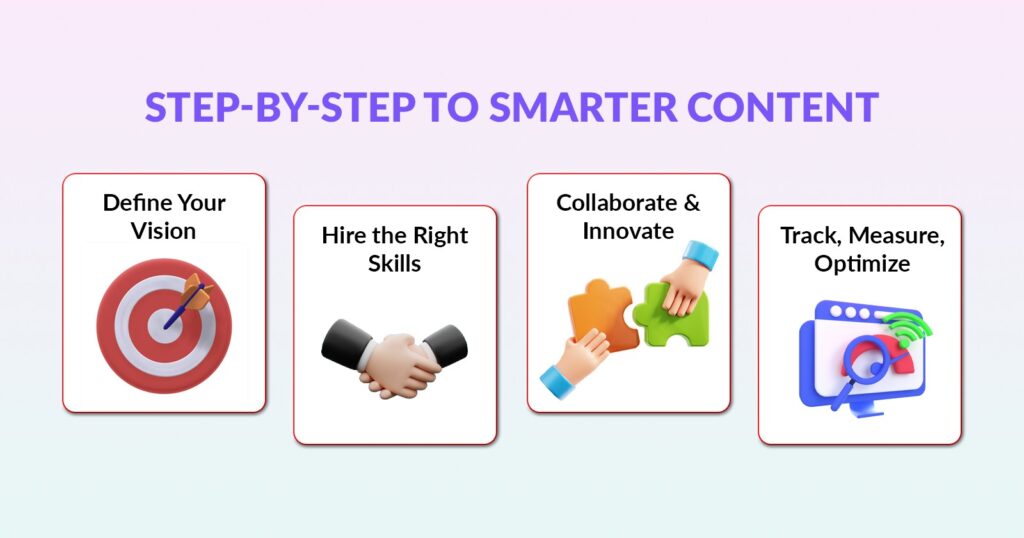
Step 1 – Define Brand Identity and Messaging
Before a single blog post or video goes live, your team needs to know what the brand stands for. Align content with your mission, values, and goals so every piece feels consistent. Think of Nike: their content almost always carries the theme of empowerment and achievement. That consistency keeps their messaging recognizable across platforms. You may use recruitment platforms such as LinkedIn and Indeed to facilitate effective hiring decisions.
Step 2 – Hire the Right Mix of Skills
A winning content team blends creativity, strategy, and technical expertise. Writers, designers, editors, and strategists all play a role. When hiring, focus on more than just portfolios. It’s important to see if candidates match your company culture and can express your brand’s personality through their content.
Step 3 – Encourage Team Collaboration & Creativity
Content is most effective when diverse skill sets collaborate. Hold brainstorming sessions where writers, designers, and strategists share ideas. Tools like Slack, Trello, Asana, and Google Docs help keep everyone aligned while fostering creativity.
Step 4 – Develop a Collaborative Content Strategy
Once the right people are on board, they need a roadmap. An editorial calendar keeps production flowing, while SEO ensures your work gets discovered. Content strategy should connect marketing goals with measurable results.
Here’s a simple KPI framework teams can use.
| KPI | Why It Matters |
|---|---|
| Website Traffic | Shows reach and visibility |
| Engagement (likes, shares, comments) | Reflects audience interest |
| Leads Generated | Connects content to business outcomes |
| Conversions/Sales | Proves ROI of content efforts |
Step 5 – Keep Your Team Learning
Things change rapidly, with new SEO updates one month, fresh design trends the next, and AI tools everyone’s talking about. If your team isn’t learning, the content starts to age fast. Even short sessions, sharing a new tool, reviewing what’s trending, can keep everyone sharp. Little upgrades in how the team works usually add up to noticeable improvements.
Step 6 – Keep Things Steady & Avoid Strict Rules
Your brand should look and sound the same everywhere. Use the same fonts, colors, and tone in all items to maintain a uniform look. Don’t create strict rules that make your content boring. Encourage your team to explore new ideas and styles while maintaining the key brand elements. This way, your brand will stay fresh and engaging.
Step 7 – Build Feedback into the Process
Publishing is not the end, so you need to watch how people react – do they click, share, or scroll away? That tells you more than any internal review. Sure, team feedback matters, but the audience always has the final word. Use what you learn and fold it into the next round. If you want to see the most common mistakes, check this guide on the top challenges in content creation and their solutions.
Best Practices for Managing a Content Creation Team
Once you’ve built your content team, the real challenge is keeping everything moving smoothly. A strong workflow and the right habits make the difference between content that just “goes live” and content that actually drives results.
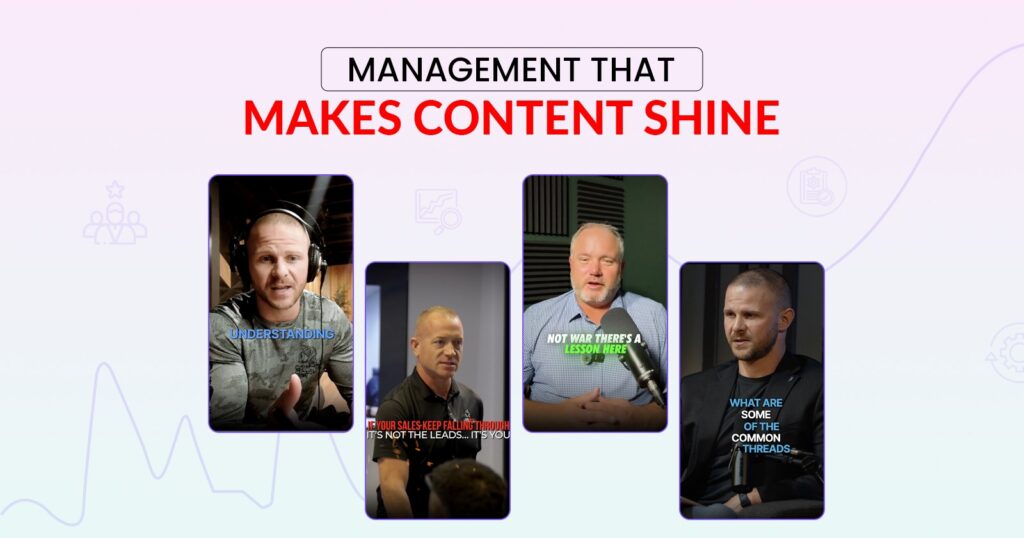
Workflow and Processes
The best teams don’t leave things to chance. A simple content creation checklist helps make sure nothing gets overlooked. Holding regular editorial meetings keeps everyone on the same page, makes deadlines clear, and tasks organized. The idea is to cut down on confusion and spend more time creating content.
Performance Tracking & Optimization
Creating content is only half the job. You also need to know how it’s performing. Key metrics like organic traffic, engagement, and conversion rates tell you what’s working and what isn’t. Many teams now use AI for content creation to test and refine ideas faster, making it easier to adjust strategy based on real data.
Here’s a quick look at how content metrics connect to business goals.
| Content Metric | Business Impact |
|---|---|
| Organic Traffic | More visibility and reach |
| Engagement (likes, shares, comments) | Stronger audience connection |
| Conversion Rate | Direct impact on leads and sales |
Outsourcing vs. In-House: Which Content Team Model Fits You?
When it comes to content creation, one of the biggest questions is whether to build your own team or work with an outside partner. Both have their perks and challenges, and the “right” choice often depends on where your business is right now.

In-House Teams
Keeping everything in-house gives you more control. Your writers, designers, and editors live and breathe your brand every day. That consistency can be powerful. But it takes time (and money) to hire, train, and grow the team. Plus, if you need to scale quickly, internal resources can get stretched thin.
Pros and Cons of In-House Teams
| Pros | Cons |
|---|---|
| Deep brand knowledge | Higher costs (salaries, benefits) |
| Full control over processes | Time-consuming recruitment & training |
| Strong cultural alignment | Harder to scale quickly |
Outsourced Teams
Working with an outside team feels very different. The biggest advantage? You instantly get access to a wide range of skills without long hiring processes. Need 10 videos this month? Outsourcing makes that possible. The downside is you don’t always have the same level of control over the little details. Still, many brands choose to hire ShortVids for content creation when they want fast results without managing a large internal setup.
Pros and Cons of Outsourcing
| Pros | Cons |
|---|---|
| Access to specialized expertise | Less direct control |
| Flexible and scalable | Potential cultural differences |
| Faster turnaround times | Quality varies across providers |
Hybrid Model for Growing Businesses
For many businesses, the ideal spot is somewhere in the middle. A hybrid model lets the in-house team handle the main strategy while trusted partners take care of execution. This way, they get the best of both worlds – brand consistency and the flexibility to scale. And if you’re hiring new talent to support that mix, expert recruiters like Gini Talent can help make sure the people you bring in fit both your skills needs and your company culture.
Conclusion – Building a Deliverable Content Creation Team
If you’re ready to take your content to the next level, consider partnering with ShortVids. Our team blends strategy, creativity, and execution to help brands scale their message without the heavy lifting
FAQs About Building a Content Creation Team
The formula is usually Plan, Create, Distribute, Measure, and Improve. It starts with strategy, moves into production, then distribution, and ends with reviewing results to refine future content.
The 4 H’s stand for Helpful, Heard, Humor, and Happenings. This framework guides brands to create helpful resources, regularly engaging content, big campaign pieces, and evergreen content that always stays relevant.
A marketing content bucket is a tool used to categorize content into specific themes or topics. Each bucket holds content that shares a common theme, making it easier to plan and distribute across various marketing channels. For example, a fitness brand might use buckets like “Nutrition,” “Workouts,” and “Mindset.” They keep your content focused and organized.
Some essentials include Google Docs or Notion for planning, Canva or Adobe for design, Trello or Asana for workflow, and video editing tools like Premiere Pro or ShortVids editing services for visual storytelling.
Keep it clear, consistent, valuable, and authentic. These four rules ensure your content resonates and builds trust with your audience.
There’s no one-size-fits-all answer. A small startup might begin with 2 to 3 people (writer, designer, strategist), while larger companies may need 7 to 10 specialized roles covering SEO, video, analytics, and distribution.
Success can be tracked with key performance indicators (KPIs) such as website traffic, engagement rates, lead generation, and conversions. Many brands also look at how consistently their team meets deadlines, the quality of output, and the ROI of campaigns.
Book a Call Today
- Fixed monthly plans starting at $999
- 24-hour turnaround time (or less) on all short-form edits
- 3-layer quality check system on every video
- No more chasing freelancers or managing editors
- Scale up to 50+ videos/month without hiring in-house
- Content team trained on platform trends, scroll-stopping hooks & storytelling
- Fully managed by professionals – you just upload & approve
- Response time: Under 1 hour (US & GCC time zones)
Cut your production costs, not your standards.

